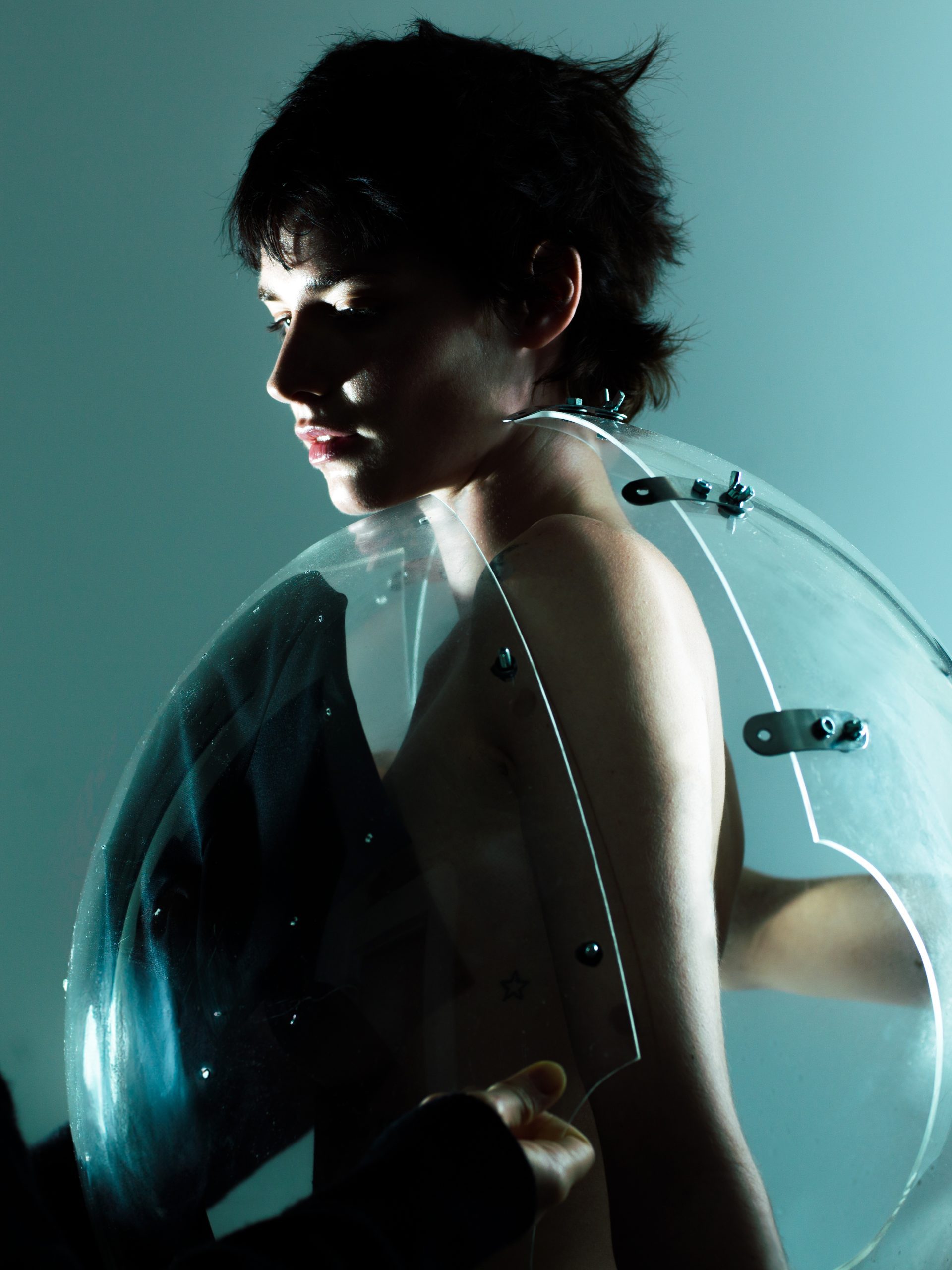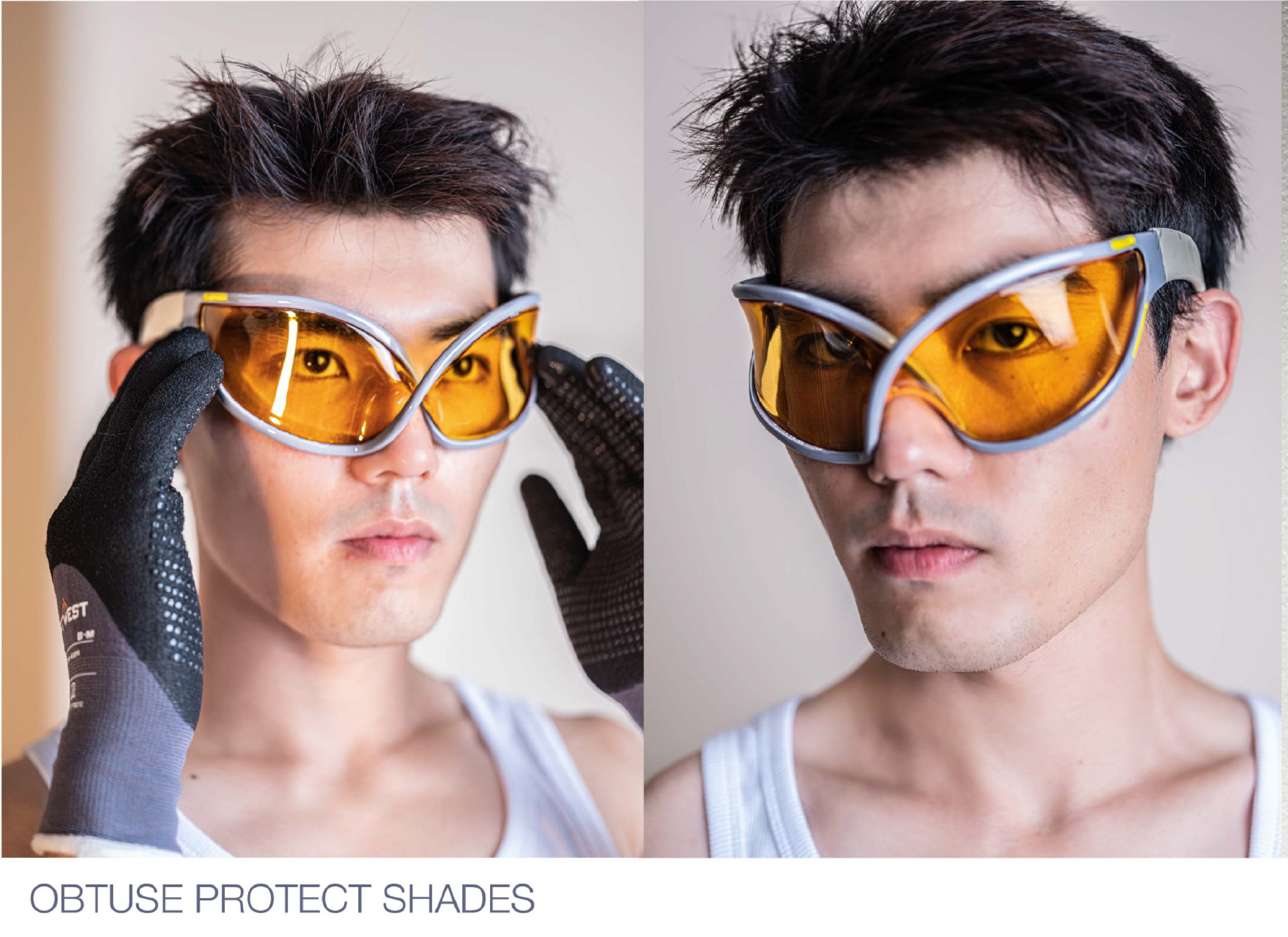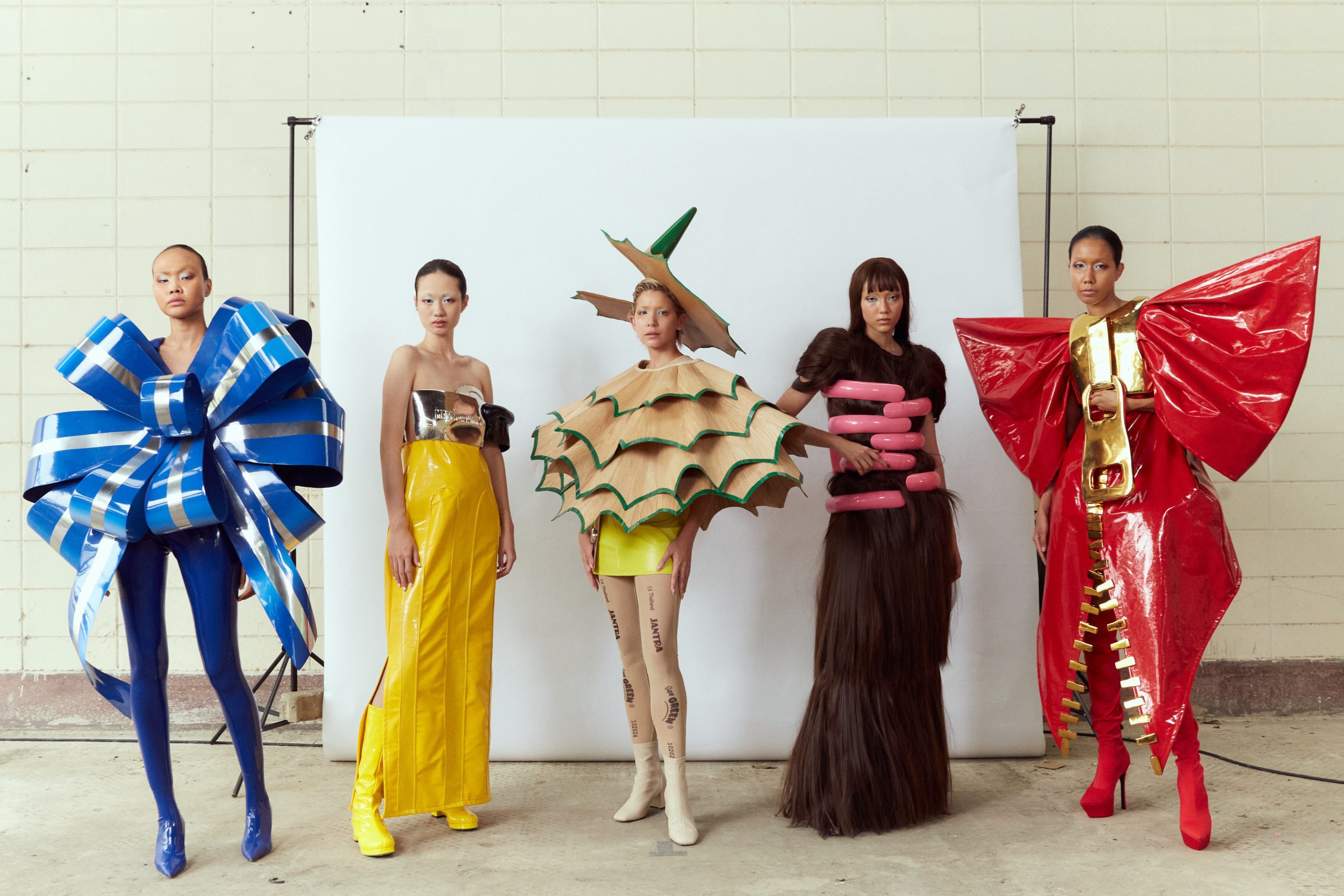Fad trends are often stimulated by the newest Hollywood blockbuster, an awaited Netflix series, or a celebrity sighting. Yet seldomly, history peaks its head, and designers, creators, and shoppers look to the past for inspiration on what they should be wearing next. At the moment, it seems that the early European world of theatre has come under analysis, and the dramatic trope characters of the clown and the harlequin have been excavated. These two foiled characters have a distinct partnership, and share both a lavish theatrical history and an acquired and garish sense of aesthetics, alongside other masked personas. In 2023, the iconic diamond prints, pleated collars, oversized bows, and general waywardness of this comedic troupe have somehow re-emerged in fashion, and the flamboyance of this staged and Thespian style seems to be coloring today’s trends.
The clown caricature, with its painted smile and blubbering eyes, has come to typify a playful impishness, the grandeur of the stage, and an inexpressive eeriness in popular culture. Positioned as a contemporary circus entertainer for children, the illustrative figure has also been translated into the uncanny villain of many horror movies. As such, the archetypal clown has secured a Marmite reputation with modern audiences. However, the clown figure was not always the polemic modern entertainer it is today that divides society. The clown was actually reared in 16th-century theatre and was a comrade and character counterpart to the Harlequin, who was the most famed of the comic servant characters from Italy’s conmedia dell’arte. Around Europe, the structure of this Italian comedy was mimicked, and developed into a slapstick entourage, often headed by the Harlequin, who drove the plot with his unrequited love interest. The Harlequin figure was thus in many ways the lead and the romantic, whilst the clown was the begrudged interferer. The whole entourage of characters was however intended to be deeply emotive, performative, and entertaining. Presently, it is the clown and the harlequin whose names’ seem to have stuck around, and who have become somewhat distilled into one aesthetic image that carries a magnetism and charisma of the stage. In 2023, both of these characters, and their comedic facades, are shaping a certain aestheticism, linked to contrariness and hyperbole, that seems to be trending.
The clown, being so intrinsically linked to its iconic costume, has influenced fashion across many years and had some key revival moments. Vivienne Westwood notoriously used the harlequin prints in her 1989 collection – Voyage to Cyrethra – and Viktor and Rolf’s SS 2008 showcase was notably clown-esque, with ruffles and violins accessorizing the looks. Moschino’s SS 2020 collection also played with both Picasso and Harlequin aesthetics, with Bella Hadid in a blue and pink one-piece being the most obvious nod to clowncore.
For some reason, clowncore has re-sprung back into life again in 2023, and this time reached a gutsier sartorial peak. Recently, Harry Styles wore a “Harlequin suit” for the Grammy 2023 Awards and red carpet. His jumpsuit – an Egonlab x Swarovski collab – consisted of 250,000 crystals in 9 different colors, and was a beautiful take on the harlequin style, indisputably appropriate for such an animated and beloved performer. More notably, Armani Privé’s SS23 collection, which debuted in January, was totally inspired by the harlequin, with even the staging being wallpapered in a chintzy pastel diamond pattern. With Armani ditching these aesthetics in place of florals for their most recent July presentation, all eyes were on other brands to see if some harlequin imagery would be carried through to couture week.
Valentino’s pieces were certainly laced with the extravagance typical of this trend, with big bow shoes being a central feature that affiliated the collection with the contrary styles of clowncore. Ruffles and large silhouettes also made an appearance. Meanwhile, Viktor and Rolf unsurprisingly experimented with over-the-top bows and frilled decorations, and many of their quirky cartoonish pieces seemed to be singing to the clownish and fantastical way of dressing that is presently popularized on social media. Their current brand image lends itself so seamlessly to this trend, and we are keenly awaiting a more derisive harlequin-inspired collection.
This trend could be a rebellious response to the “normcore” minimalism that has become fashionable elsewhere, or it could be an expression of frivolity against the backdrop of what has been a difficult few years shaped by the pandemic and recession. Either or, the harlequin trend is definitely awakening our inner child, and this resurgence of larger-than-life dressing is encouraging us all to rifle back through the dressing up box as an adult. Perhaps we all need to be a little less serious when it comes to fashion, and in the words of Viktor and Rolf, who stuck the pop art words onto one of their bare models, we need to “Dream On”.
By Hebe Street from GLITCH Magazine





